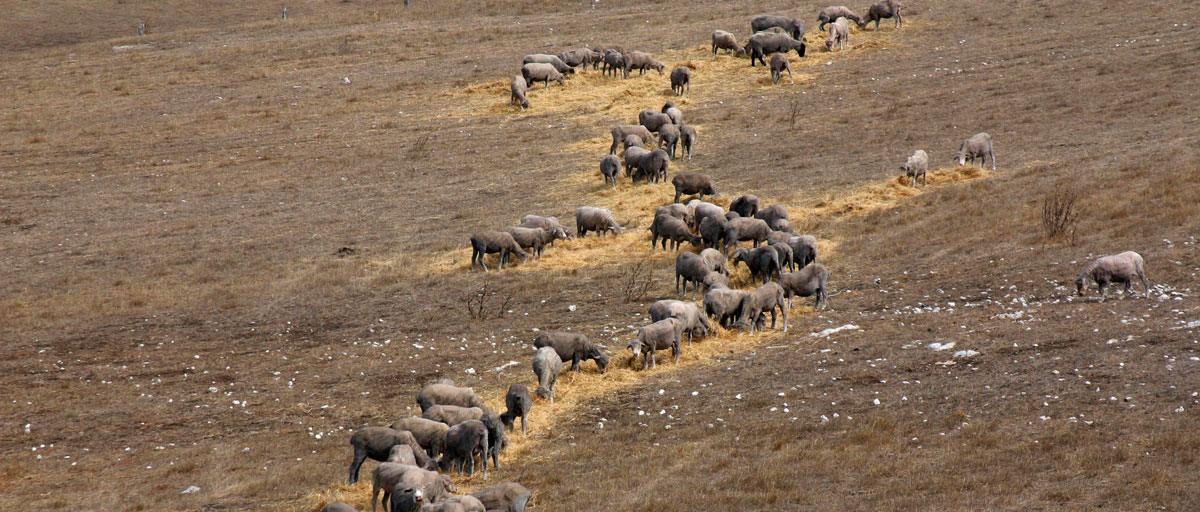
Researchers have empirically tested whether self-organized, bottom-up collaborative forms of governance can accomplish adequate fit between a governance system and the ecosystems under management. The result is largely positive. Photo: A. Maslennikov/Azote
Governance
A better fit
New empirical evidence of the role of collaborative approaches for better fit between governance systems and ecosystems
- Study tested fundamental question of whether self-organized, bottom-up
collaborative governance works - Study conducted in the Fitz-Stirling conservation region, Western Australia
- A collaborative approach is
able to deal with some but not all governance challenges
Today’s environmental challenges are increasingly complex and involve a number of social and ecological interdependencies. People increasingly depend on ecosystem services from all around the world and are simultaneously shaping how nature works both on local and global scales.
In order to effectively manage these challenges centre researchers have previously argued that environmental governance efforts must deal with “the problem of fit”. That is, governance must fit, or align with, the characteristics of the biophysical systems in question.
One way of achieving this is more collaborative forms of governance that foster self-organization and flexibility.
In other words, that people can decide what activities they engage with and with whom they will collaborate to implement for example environmental policies and conservation programs.
Empirical support
This, however, is not always an easy task, particularly for global environmental problems that extend beyond political jurisdictions (e.g the conservation of migrating birds) or both jurisdictions and policy sectors (ocean and water management). Not to mention problems that are characterized by uncertain and rapid cumulative changes such as the management of invasive species.
Now, a group of Australian and Swedish researchers including Örjan Bodin from the centre, have empirically tested the fundamental question of whether self-organized, bottom-up collaborative forms of governance are able to accomplish adequate fit between the governance system and the ecosystems under management.
Or does such social-ecological fit require arrangements that are designed and coordinated in a more top-down manner?
"Our study provides empirical support for collaborative forms of governance to better address the problem of fit, but also suggests that conservation initiatives often need specific guidance to better align with the ways ecological resources are interconnected across the landscape"
Örjan Bodin, co-author
Australian case study
Bodin and colleagues conducted their study in the Fitz-Stirling conservation region, situated in Western Australia. This region is situated in one of the world’s biodiversity hotspots and is an illustrative case of several global environmental issues, including extensive deforestation, build-up of salt in soils, invasive species and climate change.
Covering some 240,000 hectares of mostly private farm land (cropping and sheep grazing) it is bounded by two of the largest areas of intact natural habitats that remain in the broader hotspot: the Fitzgerald River and the Stirling Range National Parks.
Data on the interactions between 15 actors (organizations who undertake conservation and management activities) in the region was sourced from 25 semi-structured interviews and questionnaires.
Actors included state and local government agencies, natural resource management groups, nongovernmental organizations, research organizations, private organizations, and community groups.
Social-ecological fit
This data was then combined with publicly available ecological data on the distribution of native vegetation in more than 80 different vegetation types.
The actors, vegetation types, and their interactions were then characterized as a social-ecological network, where actors were the social nodes and vegetation types the ecological nodes.
Interactions between these nodes include restoring and replanting vegetation, protection of remnant vegetation, fire management, and management of invasive species.
Using an approach developed within the social sciences (Multilevel Exponential Random Graph Models) the Örjan Bodin and his colleagues found that the collaborative approach that was used in the Fitz-Stirling initiative is able to deal with some but not all of the governance challenges related to "the problem of fit" between institutions and ecosystems.
"Our results have substantial policy implications because they show that bottom-up collaborative arrangements can achieve social-ecological fit and be deliberately created," concludes Örjan Bodin.
RELATED INFO
Guerrero, A. M., Ö. Bodin, R. R. J. McAllister, and K. A. Wilson. 2015. Achieving social-ecological fit through bottom-up collaborative governance: an empirical investigation. Ecology and Society 20(4):41. http://dx.doi.org/10.5751/ES-08035-200441
In his research on social-ecological systems (SES) Örjan Bodin combines and integrate methods and theories from several different scientific
disciplines. Bodin's main focus is to develop better understanding of SES through quantitative modeling and analyses of empirical data drawn from case studies and, more recently, behavioral experiments.






